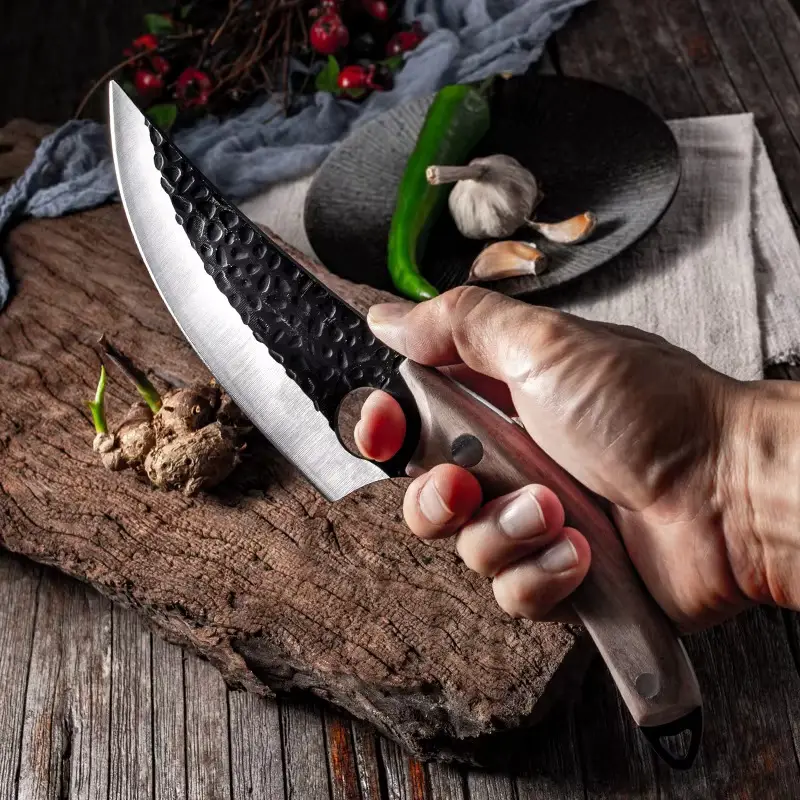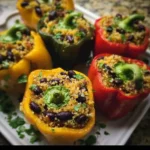Oh, profiteroles. Just the name rolls off the tongue with a hint of French elegance, doesn’t it? For years, I’d admired these delicate cream puffs from afar, picturing them as impossibly intricate creations best left to Parisian patisseries. But the truth? They’re wonderfully achievable at home, and let me tell you, the reward is absolutely worth the (minimal!) effort. Last weekend, craving a bit of indulgence, I decided to finally conquer the profiterole. Following this recipe, the process was surprisingly smooth, and the result? Pure magic. Imagine biting into a light-as-air, slightly crisp puff, the warmth giving way to a rush of cold, creamy vanilla ice cream, all drizzled with a decadent, glossy chocolate ganache. My family devoured them in minutes, declaring them the best dessert I’ve made in ages. The smiles alone were enough to make me want to whip up another batch immediately! If you’re looking to impress without spending hours in the kitchen, or simply want a truly delightful treat that’s both elegant and utterly satisfying, look no further. This profiterole recipe is your ticket to dessert heaven.
Ingredients for Perfect Profiteroles
To embark on your profiterole adventure, gather these simple yet essential ingredients. High-quality ingredients will always elevate the final dish, so choose wisely!
- For the Choux Pastry (Pâte à Choux):
- 1/2 cup Water: Water is crucial for creating steam during baking, which is what gives choux pastry its signature hollow interior and light texture. Tap water is perfectly fine, but filtered water can be used if preferred, especially if your tap water has a strong taste.
- 1/4 cup Unsalted Butter: Butter adds richness, flavor, and tenderness to the pastry. Unsalted butter is recommended as it allows you to control the salt content precisely. If you only have salted butter, you can omit the added salt in the recipe, but be mindful of the overall saltiness.
- 1/2 tsp Granulated Sugar: A touch of sugar adds a subtle sweetness to balance the savory notes and aids in browning during baking. Granulated sugar is ideal as it dissolves easily into the water and butter mixture.
- 1/4 tsp Salt: Salt enhances the flavors of all the other ingredients and is essential for developing the gluten in the flour, which is crucial for the structure of the pastry. Table salt or sea salt works well.
- 1/2 cup All-Purpose Flour: All-purpose flour provides the structure for the choux pastry. It’s important to measure it accurately, preferably using the spoon-and-level method (spooning flour into the measuring cup and leveling off the excess with a straight edge) to avoid using too much flour, which can result in a dense pastry. Do not use self-rising flour.
- 2 Large Eggs: Eggs are the binding agent and add moisture, richness, and leavening power to the dough. They are incorporated one at a time and beaten vigorously to create a smooth, emulsified batter. Use large eggs for consistent results.
- For the Chocolate Ganache:
- 2 oz Dark or Semi-Sweet Chocolate: The star of the ganache, choose a good quality dark or semi-sweet chocolate for the best flavor. Dark chocolate (around 60-70% cacao) provides a richer, more intense chocolate flavor, while semi-sweet chocolate offers a slightly sweeter and milder taste. Chocolate chips, chopped chocolate bars, or couverture chocolate can be used.
- 3 tbsp Heavy Cream: Heavy cream adds richness, smoothness, and shine to the ganache. It also helps to melt the chocolate and create a pourable consistency. Heavy cream with at least 36% milkfat is recommended for optimal results.
- For Filling:
- Vanilla Ice Cream: Classic vanilla ice cream is the perfect complement to the choux pastry and chocolate ganache. Choose a good quality vanilla ice cream for the best flavor and texture. You can also experiment with other flavors like French vanilla, chocolate, or even coffee ice cream for a twist.
Step-by-Step Instructions for Baking Perfect Profiteroles
Follow these detailed instructions to create profiteroles that are sure to impress. Each step is crucial for achieving the perfect texture and flavor.
- Preheat and Prepare: Begin by preheating your oven to 425°F (220°C). This high initial temperature is essential for creating steam and helping the profiteroles puff up. Line a baking sheet with parchment paper or a silicone baking mat. Parchment paper prevents sticking and makes cleanup easier, while a silicone mat provides even heat distribution and can be reused.
- Combine Wet Ingredients: In a small saucepan, combine the water, unsalted butter, granulated sugar, and salt. Place the saucepan over medium heat. Warming these ingredients together allows the butter to melt evenly and the sugar and salt to dissolve completely.
- Melt Butter and Dissolve Solids: Warm the mixture until the butter is fully melted and the sugar and salt are dissolved. You’ll see the butter melting and the mixture becoming homogenous. Avoid boiling the mixture at this stage, just gently warm it until everything is melted and combined.
- Add Flour and Cook the Dough: Remove the saucepan from the heat. Immediately add all the all-purpose flour at once. Stir vigorously with a wooden spoon or spatula until the flour is fully incorporated. Initially, it might seem a bit dry and crumbly, but keep stirring until it comes together into a dough.
- Dry Out the Dough: Return the saucepan to low heat. Stir the dough continuously for 1-2 minutes. This step is crucial for drying out the dough and removing excess moisture. The dough is ready when it becomes smooth, shiny, and pulls away from the bottom and sides of the saucepan, forming a ball. You might notice a thin film forming on the bottom of the pan, which is normal. This step ensures the pastry will puff up properly in the oven and not be soggy.
- Cool Slightly and Incorporate Eggs: Turn off the heat and move the saucepan to your counter to cool slightly for a minute or two. This prevents the eggs from scrambling when added. Add one egg at a time. Beat vigorously after each addition until the egg is fully incorporated and the dough becomes smooth and paste-like again. It may seem challenging at first, and the dough might appear to separate after adding the first egg. Don’t worry, just keep beating vigorously. The dough will eventually come back together and become smooth and glossy. Repeat with the second egg.
- Pipe the Batter: Once both eggs are incorporated, the choux pastry batter is ready. Fill a pastry bag fitted with a large round tip (such as a Wilton 1A or Ateco 806) with the batter. Alternatively, you can use a zip-top bag with a corner snipped off to create a makeshift piping bag. Pipe the batter onto the prepared baking sheet in medium-sized mounds, about 1 1/2 inches wide and about 1 inch apart. Keep the mounds relatively uniform in size for even baking. If you don’t have piping bags, you can use two spoons to shape and drop mounds of batter onto the baking sheet.
- Bake at High Temperature: Place the baking sheet in the preheated oven at 425°F (220°C) for 10 minutes. The high initial temperature creates a burst of steam, causing the puffs to rise rapidly.
- Reduce Temperature and Continue Baking: After 10 minutes, WITHOUT opening the oven door, lower the oven temperature to 375°F (190°C). Continue to bake for another 20-25 minutes, or until the profiteroles are a deep golden brown color. It’s crucial not to open the oven door during the baking process, especially in the first 20 minutes, as this can cause the puffs to deflate. The color is a good indicator of doneness; they should be a rich, deep golden brown, indicating they are cooked through and crisp.
- Vent and Dry in Oven: Once the profiteroles are deeply golden, turn off the oven. Open the oven door slightly and gently pierce each puff with a sharp knife or toothpick to release steam. This prevents them from becoming soggy as they cool. Let the puffs rest in the oven with the door slightly ajar for another 15 minutes. This allows them to dry out further and become even crispier.
- Cool Completely: Remove the baking sheet from the oven and transfer the profiteroles to a wire rack to cool completely. Cooling on a wire rack allows air to circulate around them, preventing condensation and keeping them crisp. Make sure they are completely cool before filling.
- Prepare Chocolate Ganache: While the profiteroles are cooling, prepare the chocolate ganache. Warm the heavy cream in a small microwave-safe bowl in the microwave for approximately 10-15 seconds, until it is steaming but not boiling. Alternatively, you can warm the cream in a small saucepan over low heat.
- Melt Chocolate: Add the chopped chocolate or chocolate chips to the warm cream. Let it sit for about a minute to soften the chocolate. Stir gently until the chocolate is completely melted and the ganache is smooth and glossy. If the chocolate is not melting smoothly, you can microwave the mixture in 10-second intervals, stirring after each interval, until smooth.
- Assemble Profiteroles: Once the profiteroles are completely cool, use a serrated knife to carefully slice each puff horizontally into two halves (top and bottom).
- Fill with Ice Cream: Place a couple of mini scoops of vanilla ice cream onto the bottom half of each profiterole. Work quickly to prevent the ice cream from melting too much.
- Top and Drizzle: Place the top half of the profiterole back on top of the ice cream. Drizzle generously with the warm chocolate ganache. Serve immediately for the best texture and flavor. The warmth of the ganache slightly softens the pastry and contrasts beautifully with the cold ice cream.
Nutrition Facts (Approximate)
(Per serving, assuming recipe makes approximately 12 profiteroles)
- Servings: 12
- Calories per Serving (estimated): 250-300 calories (This is an estimate and can vary depending on the amount of ice cream and chocolate ganache used, as well as the specific brands and ingredients.)
- Macronutrients (approximate per serving):
- Fat: 15-20g
- Saturated Fat: 8-12g
- Cholesterol: 60-80mg
- Sodium: 100-150mg
- Carbohydrates: 25-30g
- Sugar: 15-20g
- Protein: 3-4g
- Macronutrients (approximate per serving):
- Note: These values are estimates and should be used as a general guideline. For precise nutritional information, it’s recommended to use a nutrition calculator and input the specific brands and quantities of ingredients used. Ice cream and chocolate ganache can significantly impact the calorie and sugar content.
Preparation Time
- Prep Time: 25 minutes (This includes measuring ingredients, making the choux pastry dough, and preparing the baking sheet.)
- Cook Time: 35 minutes (This includes the initial 10 minutes at 425°F and the subsequent 25 minutes at 375°F.)
- Resting Time in Oven: 15 minutes
- Cooling Time: 30-45 minutes (for profiteroles to cool completely before filling)
- Total Time: 1 hour 45 minutes to 2 hours (including cooling time)
How to Serve Profiteroles
Profiteroles are incredibly versatile and can be served in a variety of delightful ways. Here are some ideas to elevate your dessert presentation and enjoyment:
- Classic Presentation:
- Individual Servings: Arrange 2-3 profiteroles per plate, drizzled generously with chocolate ganache. This is a simple yet elegant way to serve them.
- Profiterole Tower (Croquembouche Inspired): For a truly impressive presentation, stack the profiteroles in a cone shape to create a tower. Drizzle with ganache and you have a miniature version of a croquembouche.
- Platter Style: Arrange the filled and drizzled profiteroles on a beautiful platter for a family-style dessert.
- Ice Cream Variations:
- Flavor Experimentation: While vanilla is classic, don’t hesitate to try other ice cream flavors! Chocolate, coffee, pistachio, strawberry, or even salted caramel ice cream can be delicious fillings.
- Sorbet or Gelato: For a lighter option, fill the profiteroles with sorbet or gelato instead of ice cream, especially in warmer weather.
- Homemade Ice Cream: Take it to the next level by using homemade vanilla or your favorite ice cream flavor.
- Sauce and Topping Variations:
- Caramel Sauce: Drizzle with warm caramel sauce instead of or in addition to chocolate ganache for a richer, sweeter flavor.
- Fruit Sauces: Raspberry, strawberry, or blueberry sauce can add a bright and fruity element that complements the richness of the chocolate and pastry.
- Whipped Cream: Serve with a dollop of freshly whipped cream on the side for extra indulgence.
- Sprinkles and Nuts: Garnish with chopped nuts (almonds, hazelnuts, pecans), sprinkles, or cocoa powder for added texture and visual appeal.
- Powdered Sugar: A simple dusting of powdered sugar adds a touch of elegance and sweetness.
- Serving Temperature:
- Serve Immediately: For the best texture contrast, serve profiteroles immediately after filling and drizzling. The pastry will be crisp, the ice cream cold, and the ganache warm.
- Slightly Chilled: If you need to prepare them slightly ahead of time, you can assemble the filled profiteroles and chill them briefly in the refrigerator for about 15-20 minutes before serving. However, be aware that the pastry will soften slightly over time.
- Occasion Specific Serving:
- Dessert for Dinner Parties: Profiteroles are perfect for dinner parties as they are elegant, impressive, and can be partially prepared in advance.
- Special Occasions: Celebrate birthdays, anniversaries, or holidays with a batch of homemade profiteroles.
- Casual Treat: Enjoy them as a delightful weekend treat or a special dessert after a family meal.
Additional Tips for Profiterole Perfection
Mastering profiteroles is all about technique and attention to detail. Here are five essential tips to ensure your success:
- Perfect Dough Consistency is Key: The choux pastry dough should be smooth, shiny, and pipeable, but not too runny. After adding the eggs, the dough should slowly fall off a spoon in a thick ribbon. If the dough is too thick, it will be difficult to pipe and the puffs may not rise properly. If it’s too thin, they may spread too much and become flat. Adjusting the amount of egg slightly can help achieve the perfect consistency. If your dough seems too thick after two eggs, you can beat a third egg in a separate bowl and add it in very small increments until you reach the desired consistency.
- Don’t Open the Oven Door Too Early: Resist the temptation to peek inside the oven during the first 20 minutes of baking. Opening the oven door releases the steam that is crucial for the puffs to rise, and can cause them to deflate. Trust the process and rely on the baking time and visual cues (golden brown color) to determine doneness.
- Proper Baking Temperature Control: The initial high temperature (425°F/220°C) is critical for creating steam and puffing up the pastry. Lowering the temperature to 375°F (190°C) for the remaining baking time ensures the puffs cook through and become golden brown without burning. Oven temperatures can vary, so it’s helpful to use an oven thermometer to ensure accuracy.
- Cool Profiteroles Completely Before Filling: Make sure the profiteroles are completely cool before slicing and filling them with ice cream. Warm puffs will melt the ice cream too quickly and make them soggy. Cooling them on a wire rack promotes airflow and keeps them crisp.
- Make Ahead Tips for Convenience:
- Bake Puffs Ahead: You can bake the choux pastry puffs a day ahead of time. Once completely cooled, store them in an airtight container at room temperature. Just before serving, you can crisp them up in a low oven (around 300°F/150°C) for a few minutes if desired, though this isn’t strictly necessary.
- Prepare Ganache Ahead: The chocolate ganache can also be made in advance and stored in the refrigerator for up to 3 days. Reheat it gently in the microwave or over a double boiler until smooth and pourable before serving.
- Assemble Just Before Serving: For the best texture, assemble the profiteroles (slice, fill with ice cream, and drizzle with ganache) just before serving. This ensures the pastry remains crisp and the ice cream is perfectly cold.
Frequently Asked Questions (FAQ) About Profiteroles
Have questions about making profiteroles? Here are answers to some common queries to help you bake with confidence:
Q1: Why are my profiteroles flat and not puffed up?
A: Several factors can lead to flat profiteroles:
- Insufficient Dough Drying: If you didn’t dry out the dough enough on the stovetop, there might be too much moisture in the dough, preventing proper puffing. Ensure the dough is smooth, shiny, and pulls away from the sides of the pan before adding eggs.
- Oven Door Opened Too Early: Opening the oven door too early releases steam and can cause the puffs to deflate. Avoid opening the door during the initial baking time.
- Oven Temperature Issues: An oven that is not hot enough, or temperature fluctuations, can also affect puffing. Use an oven thermometer to ensure accurate temperature.
- Batter Consistency: If the batter is too thin, it may spread and not puff up properly. If it’s too thick, it may be dense and not rise. Aim for the ribbon-like consistency described in the tips.
Q2: My choux pastry dough is lumpy and not smooth. What did I do wrong?
A: Lumpy dough can occur if the flour wasn’t incorporated quickly enough into the hot water and butter mixture, or if the eggs weren’t beaten in vigorously enough. Make sure to add all the flour at once and stir quickly and continuously until it forms a ball. When adding eggs, beat vigorously after each addition until the dough becomes smooth and emulsified again. Don’t be afraid to use some muscle!
Q3: Can I make profiteroles without a pastry bag?
A: Yes, absolutely! While a pastry bag with a round tip makes piping easier and more uniform, you can definitely make profiteroles without one. Use two spoons to scoop and shape mounds of batter onto the baking sheet. They might not be perfectly uniform, but they will still taste delicious. You can also use a zip-top bag with a corner snipped off as a makeshift piping bag.
Q4: How do I store leftover profiteroles?
A: It’s best to store components separately for optimal quality.
- Baked Puffs: Store baked, unfilled puffs in an airtight container at room temperature for up to 2 days. They may soften slightly over time. You can crisp them up in a low oven briefly before filling.
- Chocolate Ganache: Store leftover ganache in an airtight container in the refrigerator for up to 3 days. Reheat gently before serving.
- Filled Profiteroles: Filled profiteroles are best enjoyed immediately as the pastry will soften from the ice cream. If you have leftovers, store them in an airtight container in the freezer. However, the pastry will become softer and less crisp upon thawing.
Q5: Can I freeze unbaked choux pastry dough?
A: Yes, you can freeze unbaked choux pastry dough. Pipe the dough mounds onto a baking sheet lined with parchment paper. Freeze until solid, then transfer to a freezer-safe bag or container. Bake directly from frozen, adding a few extra minutes to the baking time. This is a great way to prepare ahead and have profiteroles ready to bake whenever you crave them.
With this detailed guide, you’re now fully equipped to create exquisite profiteroles at home. Enjoy the process, savor the delicious results, and prepare to be showered with compliments! Happy baking!
Print
Profiteroles Recipe
Ingredients
- For the Choux Pastry (Pâte à Choux):
- 1/2 cup Water: Water is crucial for creating steam during baking, which is what gives choux pastry its signature hollow interior and light texture. Tap water is perfectly fine, but filtered water can be used if preferred, especially if your tap water has a strong taste.
- 1/4 cup Unsalted Butter: Butter adds richness, flavor, and tenderness to the pastry. Unsalted butter is recommended as it allows you to control the salt content precisely. If you only have salted butter, you can omit the added salt in the recipe, but be mindful of the overall saltiness.
- 1/2 tsp Granulated Sugar: A touch of sugar adds a subtle sweetness to balance the savory notes and aids in browning during baking. Granulated sugar is ideal as it dissolves easily into the water and butter mixture.
- 1/4 tsp Salt: Salt enhances the flavors of all the other ingredients and is essential for developing the gluten in the flour, which is crucial for the structure of the pastry. Table salt or sea salt works well.
- 1/2 cup All-Purpose Flour: All-purpose flour provides the structure for the choux pastry. It’s important to measure it accurately, preferably using the spoon-and-level method (spooning flour into the measuring cup and leveling off the excess with a straight edge) to avoid using too much flour, which can result in a dense pastry. Do not use self-rising flour.
- 2 Large Eggs: Eggs are the binding agent and add moisture, richness, and leavening power to the dough. They are incorporated one at a time and beaten vigorously to create a smooth, emulsified batter. Use large eggs for consistent results.
- For the Chocolate Ganache:
- 2 oz Dark or Semi-Sweet Chocolate: The star of the ganache, choose a good quality dark or semi-sweet chocolate for the best flavor. Dark chocolate (around 60-70% cacao) provides a richer, more intense chocolate flavor, while semi-sweet chocolate offers a slightly sweeter and milder taste. Chocolate chips, chopped chocolate bars, or couverture chocolate can be used.
- 3 tbsp Heavy Cream: Heavy cream adds richness, smoothness, and shine to the ganache. It also helps to melt the chocolate and create a pourable consistency. Heavy cream with at least 36% milkfat is recommended for optimal results.
- For Filling:
- Vanilla Ice Cream: Classic vanilla ice cream is the perfect complement to the choux pastry and chocolate ganache. Choose a good quality vanilla ice cream for the best flavor and texture. You can also experiment with other flavors like French vanilla, chocolate, or even coffee ice cream for a twist.
Instructions
- Preheat and Prepare: Begin by preheating your oven to 425°F (220°C). This high initial temperature is essential for creating steam and helping the profiteroles puff up. Line a baking sheet with parchment paper or a silicone baking mat. Parchment paper prevents sticking and makes cleanup easier, while a silicone mat provides even heat distribution and can be reused.
- Combine Wet Ingredients: In a small saucepan, combine the water, unsalted butter, granulated sugar, and salt. Place the saucepan over medium heat. Warming these ingredients together allows the butter to melt evenly and the sugar and salt to dissolve completely.
- Melt Butter and Dissolve Solids: Warm the mixture until the butter is fully melted and the sugar and salt are dissolved. You’ll see the butter melting and the mixture becoming homogenous. Avoid boiling the mixture at this stage, just gently warm it until everything is melted and combined.
- Add Flour and Cook the Dough: Remove the saucepan from the heat. Immediately add all the all-purpose flour at once. Stir vigorously with a wooden spoon or spatula until the flour is fully incorporated. Initially, it might seem a bit dry and crumbly, but keep stirring until it comes together into a dough.
- Dry Out the Dough: Return the saucepan to low heat. Stir the dough continuously for 1-2 minutes. This step is crucial for drying out the dough and removing excess moisture. The dough is ready when it becomes smooth, shiny, and pulls away from the bottom and sides of the saucepan, forming a ball. You might notice a thin film forming on the bottom of the pan, which is normal. This step ensures the pastry will puff up properly in the oven and not be soggy.
- Cool Slightly and Incorporate Eggs: Turn off the heat and move the saucepan to your counter to cool slightly for a minute or two. This prevents the eggs from scrambling when added. Add one egg at a time. Beat vigorously after each addition until the egg is fully incorporated and the dough becomes smooth and paste-like again. It may seem challenging at first, and the dough might appear to separate after adding the first egg. Don’t worry, just keep beating vigorously. The dough will eventually come back together and become smooth and glossy. Repeat with the second egg.
- Pipe the Batter: Once both eggs are incorporated, the choux pastry batter is ready. Fill a pastry bag fitted with a large round tip (such as a Wilton 1A or Ateco 806) with the batter. Alternatively, you can use a zip-top bag with a corner snipped off to create a makeshift piping bag. Pipe the batter onto the prepared baking sheet in medium-sized mounds, about 1 1/2 inches wide and about 1 inch apart. Keep the mounds relatively uniform in size for even baking. If you don’t have piping bags, you can use two spoons to shape and drop mounds of batter onto the baking sheet.
- Bake at High Temperature: Place the baking sheet in the preheated oven at 425°F (220°C) for 10 minutes. The high initial temperature creates a burst of steam, causing the puffs to rise rapidly.
- Reduce Temperature and Continue Baking: After 10 minutes, WITHOUT opening the oven door, lower the oven temperature to 375°F (190°C). Continue to bake for another 20-25 minutes, or until the profiteroles are a deep golden brown color. It’s crucial not to open the oven door during the baking process, especially in the first 20 minutes, as this can cause the puffs to deflate. The color is a good indicator of doneness; they should be a rich, deep golden brown, indicating they are cooked through and crisp.
- Vent and Dry in Oven: Once the profiteroles are deeply golden, turn off the oven. Open the oven door slightly and gently pierce each puff with a sharp knife or toothpick to release steam. This prevents them from becoming soggy as they cool. Let the puffs rest in the oven with the door slightly ajar for another 15 minutes. This allows them to dry out further and become even crispier.
- Cool Completely: Remove the baking sheet from the oven and transfer the profiteroles to a wire rack to cool completely. Cooling on a wire rack allows air to circulate around them, preventing condensation and keeping them crisp. Make sure they are completely cool before filling.
- Prepare Chocolate Ganache: While the profiteroles are cooling, prepare the chocolate ganache. Warm the heavy cream in a small microwave-safe bowl in the microwave for approximately 10-15 seconds, until it is steaming but not boiling. Alternatively, you can warm the cream in a small saucepan over low heat.
- Melt Chocolate: Add the chopped chocolate or chocolate chips to the warm cream. Let it sit for about a minute to soften the chocolate. Stir gently until the chocolate is completely melted and the ganache is smooth and glossy. If the chocolate is not melting smoothly, you can microwave the mixture in 10-second intervals, stirring after each interval, until smooth.
- Assemble Profiteroles: Once the profiteroles are completely cool, use a serrated knife to carefully slice each puff horizontally into two halves (top and bottom).
- Fill with Ice Cream: Place a couple of mini scoops of vanilla ice cream onto the bottom half of each profiterole. Work quickly to prevent the ice cream from melting too much.
- Top and Drizzle: Place the top half of the profiterole back on top of the ice cream. Drizzle generously with the warm chocolate ganache. Serve immediately for the best texture and flavor. The warmth of the ganache slightly softens the pastry and contrasts beautifully with the cold ice cream.
Nutrition
- Serving Size: One Normal Portion
- Calories: 250-300
- Sugar: 15-20g
- Sodium: 100-150mg
- Fat: 15-20g
- Saturated Fat: 8-12g
- Carbohydrates: 25-30g
- Protein: 3-4g
- Cholesterol: 60-80mg






